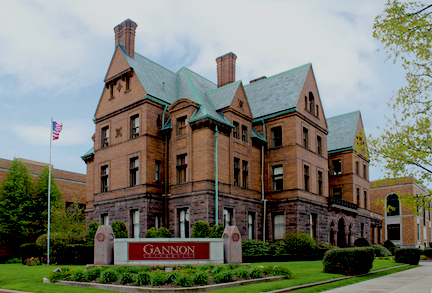A Scientific Collaboration in Teaching
News Article by Zachary Murphy, PhD Candidate and "Roving Educator"
Graduate training in research science comes with seemingly endless challenges. Many of these challenges are met by direct and indirect training with thesis advisors, committees, and colleagues. However, the reality exists that there are more individuals earning biomedical PhDs than there are research positions available at institutions of higher education; and many current PhD students do not strive to be research advisors. This leaves students having to navigate a difficult training process as well as search out opportunities for career training outside the “research only” setting. Fortunately, more institutions are recognizing the need to address the multiple avenues of career development available to future and current individuals with a PhD. URBEST is an excellent example of such a program at the University of Rochester. While there are many opportunities for internships in several career fields, the ugly truth remains that an internship for teaching is not a clearly defined entity available to those that desire a career teaching at a college or university. Therefore, upon the advice of a colleague, I sought out my own teaching and training opportunity through the American Society of Cell Biology's (ASCB's) Mentoring in Active Teaching and Learning (MALT) program.
 Having been paired with Elisa M Konieczko, PhD, at Gannon University (Erie, PA), a primarily undergraduate institution, I have been able to begin this process. Elisa has been kind enough to allow me the opportunity to be an integral part in the design and execution of her Cell Biology lecture and lab courses. By focusing on active learning pedagogical techniques, I have begun to get the experiences of optimizing student learning. Through my travel to Erie, PA, or Elisa travelling to Rochester, NY, we have begun a collaboration that can only be described as a true scientific collaboration. Through laboratory experiments designed by myself and Elisa, and ultimately to be performed by the Cell Biology students, we will address a real scientific question pertaining directly to my PhD project.
Having been paired with Elisa M Konieczko, PhD, at Gannon University (Erie, PA), a primarily undergraduate institution, I have been able to begin this process. Elisa has been kind enough to allow me the opportunity to be an integral part in the design and execution of her Cell Biology lecture and lab courses. By focusing on active learning pedagogical techniques, I have begun to get the experiences of optimizing student learning. Through my travel to Erie, PA, or Elisa travelling to Rochester, NY, we have begun a collaboration that can only be described as a true scientific collaboration. Through laboratory experiments designed by myself and Elisa, and ultimately to be performed by the Cell Biology students, we will address a real scientific question pertaining directly to my PhD project.
The collaboration will focus on the use of imaging flow cytometry, the marriage of traditional flow cytometry and microscopy, in which we can analyze hundreds of thousands of cells via immunophenotype with simultaneous image capture in up to twelve fluorescent channels. This is a technique that I have become proficient in through the substantial training I have had in the lab of James Palis, MD, at the University of Rochester. Much of this training is through direct mentorship of Kathleen McGrath, PhD, a world-renowned expert in imaging flow cytometry. By introducing undergraduate students to this method, we will teach several technical approaches to scientific questions. More importantly, we will bring these students into the scientific community as they contribute data with the intent to share at national meetings and eventually publish.
This collaboration is being made possible by internal funding at both Gannon University and the University of Rochester (URBEST), as well as additional support from the Palis laboratory. Through this project, which spans individuals, labs, funding, and support across two institutions and dozens of individuals, I will be able to supplement my research training with critical career oriented training. Though the success of the science remains to be seen, the success of our MALT collaboration has already begun through electronic and in person communication. It is my hope that other graduate students search for, and obtain, opportunities such as these in an array of career paths.
This is the first of three articles for the URBEST Newsletter by Zachary Murphy (AKA Roving Educator). He will share his experiences as a Brockport adjunct professor in January and an instructor in STEP and Upward Bound in April.
A more detailed version of "A Scientific Collaboration in Teaching", written by Elisa Konieczko in conjunction with Zachary Murphy, will be published in the Nov/Dec Newsletter for ASCB.
Tracey Baas | 10/7/2016
You may also like
No related posts found.
